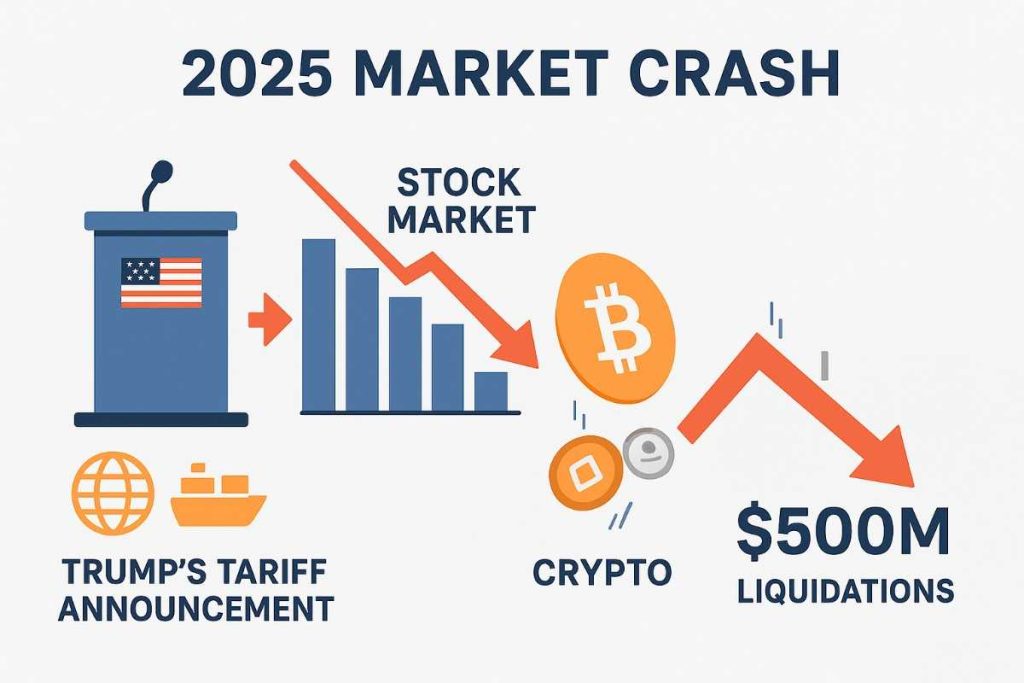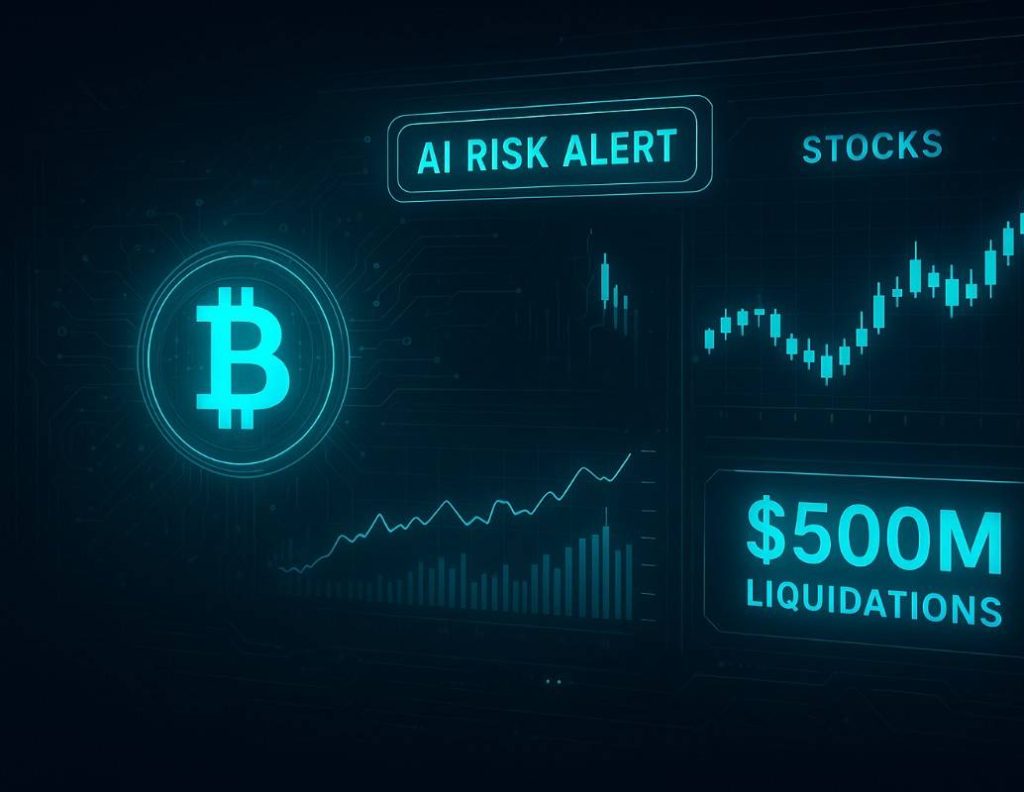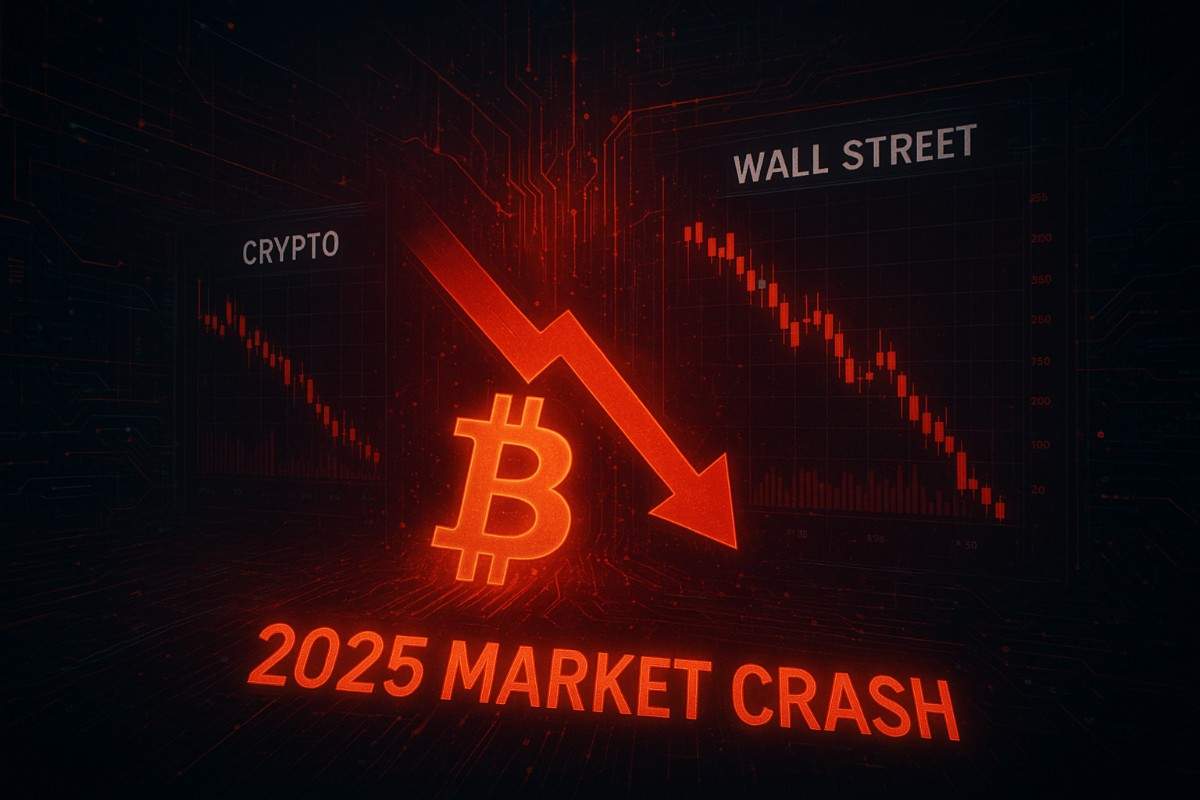Introduction: Why Market Crash 2025 Matters
The market crash 2025 has already shaken both Wall Street and Main Street, leaving investors scrambling to understand what went wrong. Unlike previous downturns, this event isn’t being driven by a single factor. Instead, it’s the result of a volatile mix of political shocks, crypto market turbulence, and investor psychology colliding at the same time.
What makes this crash so important? It reflects how interconnected today’s markets have become. A tweet from a political leader, a sudden move in Bitcoin, or an AI-driven trading algorithm can ripple through global markets in seconds. For investors in the USA, UK, and Canada, the crash has underscored just how fragile portfolios can be in 2025’s hyper-connected financial ecosystem.
What Triggered the Market Crash 2025?
Trump’s Tariff Announcement & Market Crash 2025 Shockwaves
The first domino to fall came in the form of Trump tariff news. His unexpected announcement of sweeping tariffs on Asian imports, framed as a move to protect American industry, sent shockwaves through global markets. Investors immediately began pricing in higher costs for businesses dependent on supply chains stretching from China to Europe.
Markets dislike uncertainty, and tariffs create exactly that. Within hours of the announcement, futures contracts plummeted. Technology stocks were hit especially hard, with chipmakers and electronics companies facing the brunt of the sell-off. The stock market crash narrative quickly became self-fulfilling as traders rushed to exit positions before losses deepened.
How Crypto Faced $500 Million in Liquidations During Market Crash 2025
While tariffs shook traditional markets, the crypto sector faced its own storm. A sudden sell-off triggered over $500 million in crypto liquidations within just 24 hours. Bitcoin, Ethereum, and several altcoins faced cascading margin calls as leveraged positions unwound.

Crypto markets are infamous for their volatility, but this time the liquidation wave coincided with tariff news. Retail investors panicked, institutions pulled liquidity, and the crypto market crash added fuel to the already spreading fire. The dual hit of tariffs and crypto losses cemented market crash 2025 in financial headlines across the globe.
Market Crash 2025 and Bitcoin
Bitcoin Price Update & Investor Reactions in Market Crash 2025
The Bitcoin price update during the crash told a dramatic story. After holding steady above $60,000 earlier in the year, Bitcoin tumbled below $45,000 in a matter of days. Retail investors who had piled in during the bull run watched their gains evaporate, while hedge funds that had exposure to crypto ETFs scrambled to hedge losses.
Investor reactions ranged from panic selling to cautious optimism. Some saw the dip as a buying opportunity, arguing that Bitcoin had weathered worse downturns. Others pointed to the risk of further crypto liquidation events as leverage remained high in derivatives markets. Either way, Bitcoin once again proved its role as both a driver and amplifier of volatility.
How Crypto Volatility Impacts Portfolios in Market Crash 2025
For many investors, crypto isn’t just a speculative bet anymore—it’s part of their diversified portfolios. That’s why the market crash 2025 hit harder than past sell-offs. The correlation between Bitcoin and tech stocks increased, meaning crypto no longer offered the same diversification benefit.
Portfolio resilience came under pressure as both equities and crypto declined together. Advisors began emphasizing financial risk management, reminding clients that volatility is magnified when assets move in sync. The crash became a painful lesson in why crypto exposure should be carefully sized relative to overall portfolio strategy.
The Role of AI and Risk Management in Market Crash 2025
AI in Predicting Market Crashes like Market Crash 2025
With so many moving parts, investors are increasingly looking to AI in finance for predictive power. Machine learning models had flagged rising risks before market crash 2025, but few expected the exact timing. AI-driven sentiment analysis showed growing tension around trade policies, and volatility indexes started climbing weeks earlier.

The crash highlighted both the potential and the limits of AI. While algorithms can detect patterns in vast datasets, they can’t always anticipate sudden political decisions like tariff announcements. Still, institutional investors who relied on AI-based warning systems were better positioned to reduce risk before the downturn.
Automating Risk Management with AI
Beyond prediction, AI tools have proven valuable in financial risk management. Automated systems can rebalance portfolios, trigger stop-loss orders, and manage exposure to volatile assets in real time. During market crash 2025, some firms credited AI with preventing catastrophic losses by acting faster than human traders.
For everyday investors, AI-powered apps are becoming more common. These tools can suggest diversification strategies, monitor risk levels, and help avoid emotional decision-making. As the crash showed, emotions can be costly, and automation can provide a buffer against panic-driven moves.
Investor Psychology in Times of Crisis
Panic Selling and Recency Bias
One of the defining features of market crash 2025 was the speed of investor panic. Once prices started falling, panic selling took over. This behavior is often fueled by recency bias—the tendency to assume that current trends will continue indefinitely. Investors assumed losses would deepen, so they sold, which in turn drove markets even lower.
Social media amplified these emotions. Viral posts predicting doom encouraged further panic, and retail investors without professional guidance were especially vulnerable. The result was a cycle of fear-driven decision-making that magnified the crash.
Lessons from Past Crashes
History offers lessons for those willing to learn. The dot-com bust, the 2008 financial crisis, and the 2020 pandemic sell-off all demonstrated that recovery is possible—even after severe downturns. Investors who stayed disciplined and focused on long-term fundamentals generally fared better.
Market crash 2025 reinforced these lessons. Diversification, disciplined rebalancing, and resisting emotional reactions remain critical strategies. While every crash is different, the principles of risk management and patience hold true across decades.
Business & Investor Impact
How Traders and Asset Managers Responded
Professional traders and asset managers approached the crash differently than retail investors. Many had hedges in place through derivatives or cash positions. While they weren’t immune to losses, their risk management strategies softened the blow.
Asset managers also shifted into defensive assets like bonds and gold. Institutional players used the downturn as an opportunity to buy quality stocks at a discount, positioning for eventual recovery. This contrast with retail panic selling highlights the importance of having a structured investment plan.
Implications for Banks and Regulators
For banks and regulators, market crash 2025 raised red flags. Stress tests conducted in the USA, UK, and Canada showed that while financial institutions remain solvent, vulnerabilities persist—especially in highly leveraged sectors like crypto lending.
Regulators are now debating stricter oversight of margin trading and crypto derivatives. The crash may accelerate conversations about how to balance innovation with systemic stability, particularly as AI-driven trading grows more influential.
Regional Insights: USA, UK & Canada in Market Crash 2025
Policy Responses and Stress Testing
In the USA, policymakers faced pressure to respond quickly. The Federal Reserve emphasized monitoring inflationary risks from tariffs while signaling flexibility with interest rates. In the UK, regulators leaned on stress testing banks to ensure resilience, while Canadian policymakers highlighted household debt as a key vulnerability during downturns.
Each country faced the same global event but approached solutions differently. Together, they underscored the importance of cross-border cooperation in a world where financial shocks don’t stop at national borders.
Market Readiness and Investor Trends
Investor behavior also varied by region. In the USA, retail investors with access to trading apps reacted swiftly—sometimes too swiftly—selling into volatility. In the UK, pension funds and institutional players leaned more conservative, limiting exposure to crypto. Canadian investors, long known for cautious strategies, held steadier, though real estate-linked equities still took a hit.
To see how artificial intelligence is being used to strengthen portfolios against climate-related risks, explore our article on AI in Climate Risk Finance 2025.”
These regional insights show that while the market crash 2025 was global, its impact was filtered through local policies, investor psychology, and economic structures.
FAQs
Is market crash 2025 the worst in recent years?
It’s significant, but whether it’s the worst depends on the metric. Losses rival the pandemic crash of 2020, but the mix of tariffs and crypto liquidations makes it unique.
How do tariffs affect stocks and crypto?
Tariffs raise costs for companies, reduce profits, and create uncertainty. This impacts stock valuations and can spill into crypto markets as investors de-risk.
Can AI help investors during volatility?
AI can’t predict political surprises, but it helps with financial risk management. From spotting warning signs to automating portfolio adjustments, AI reduces emotional mistakes.
Conclusion & Next Steps
The market crash 2025 is a stark reminder that modern investing is shaped by politics, technology, and psychology all at once. Trump’s tariffs, Bitcoin liquidations, and AI-driven trading systems combined into a storm that tested even seasoned investors.
The best takeaway isn’t fear—it’s preparation. Diversification, disciplined strategies, and thoughtful use of AI tools can all help investors navigate uncertain times. Above all, remember: markets recover, but only disciplined investors reap the rewards when they do.
Disclaimer: This article is for educational purposes only and does not constitute financial advice.

1 thought on “Market Crash 2025: Trump Tariffs, Bitcoin Liquidations & Investor Risks”